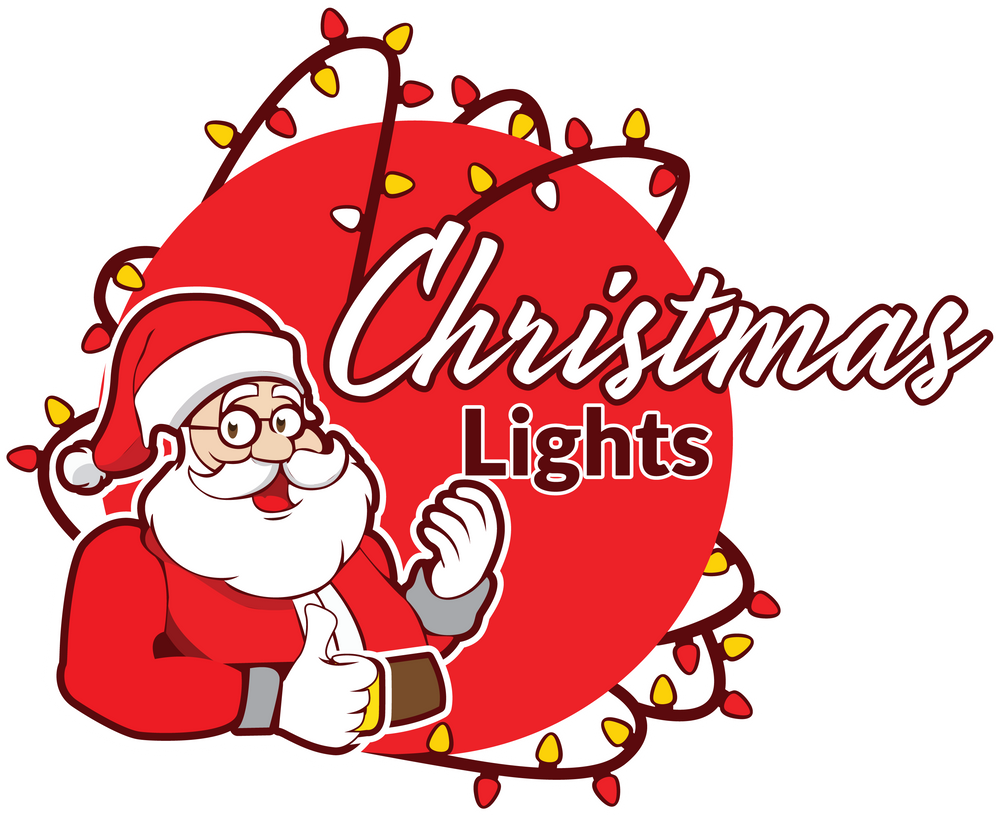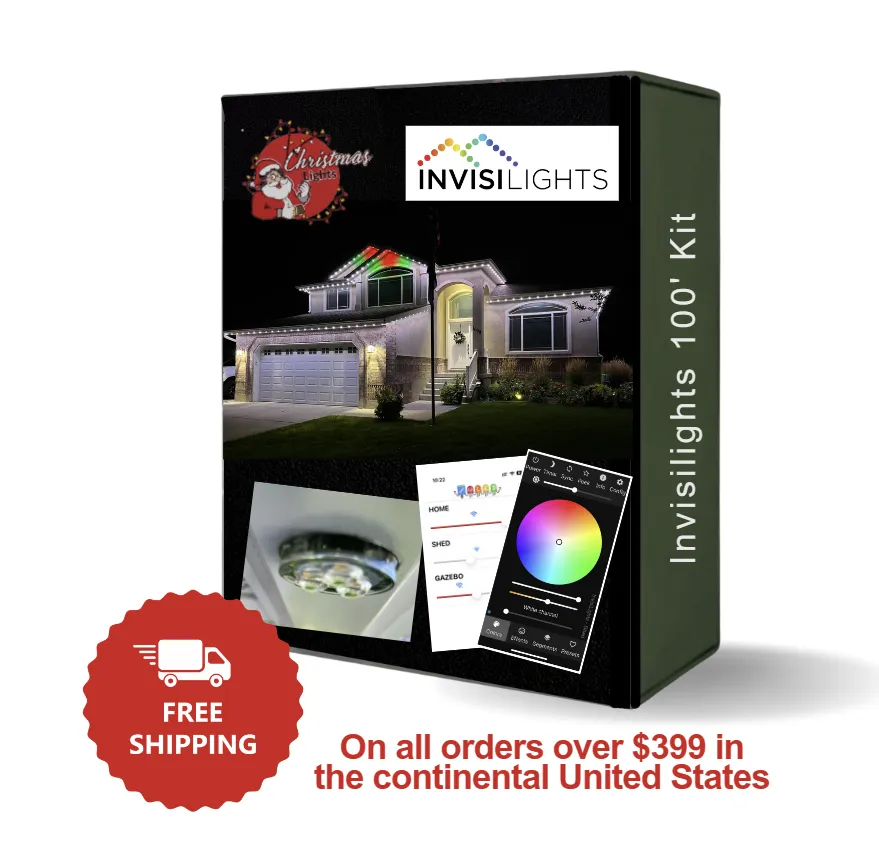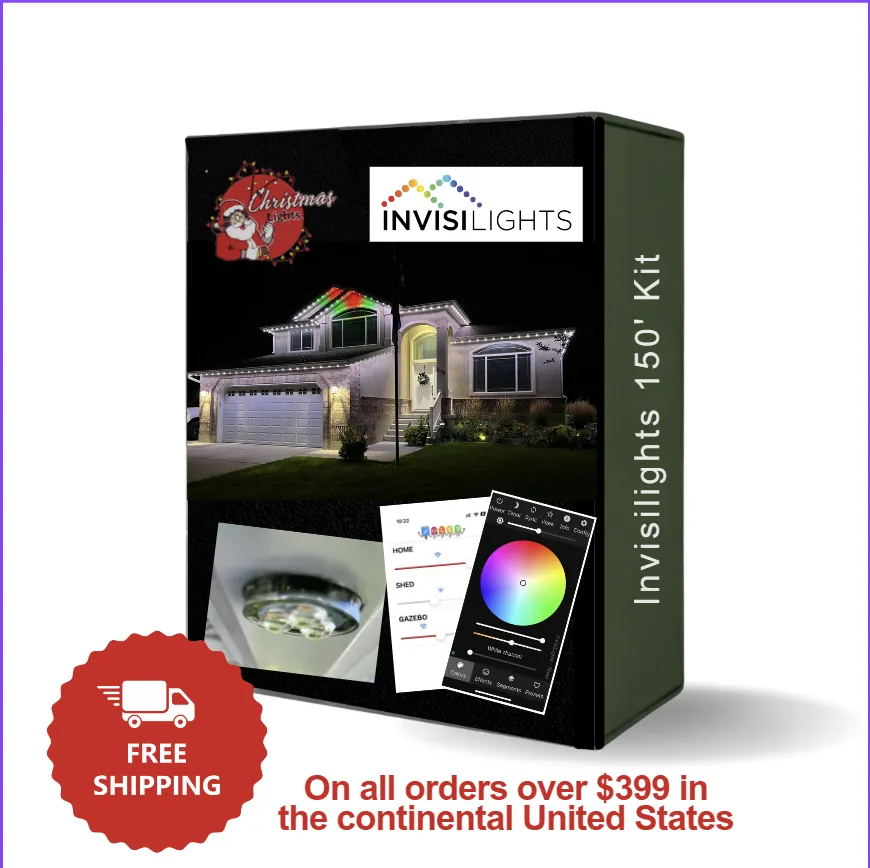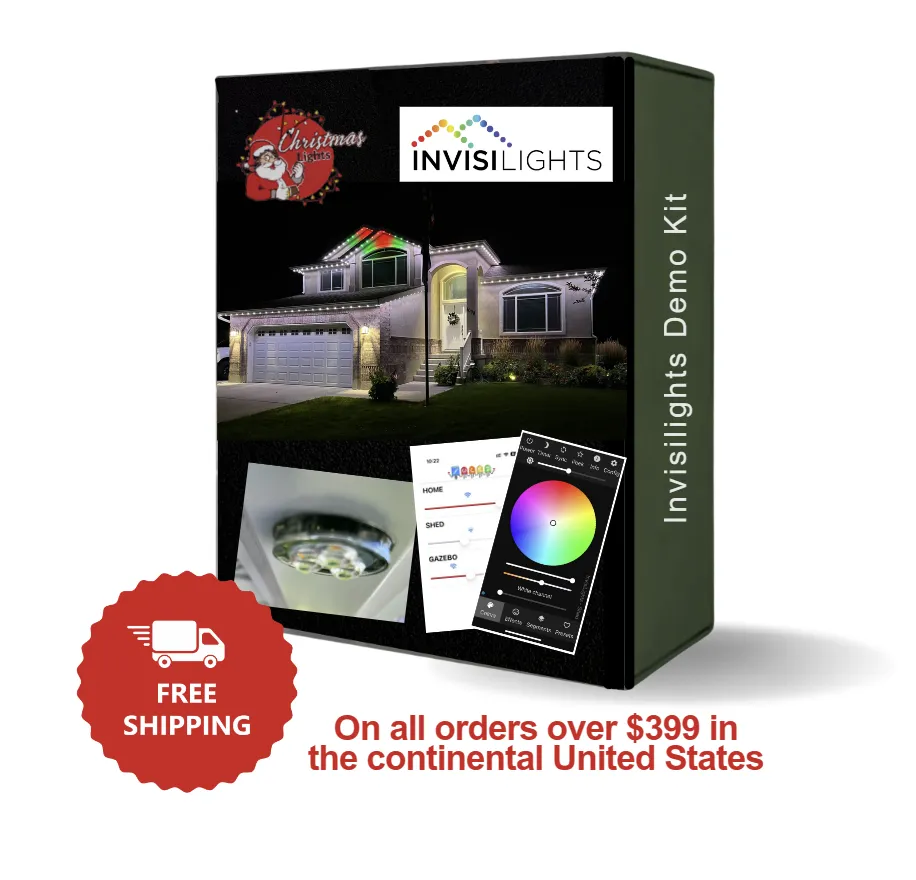Invisilights
Permanent Holiday Lighting
Customizable Lights for Any Event
WHAT YOU NEED TO KNOW BEFORE ORDERING
Total Linear footage of the installation.
This should include footage of lights and channel along with any Extensions or jumps you'll need to make
Where your controller box will be located
This is the most important step to planning out an installation, Without knowing where the controller will be you'll have no way to know the right materials to buy when it comes to extensions and accessories.
What Voltage system you want to use 24V or 36V
This is a decision you will make based on convince and efficiency, the most important factor with this will be the footage of each lighting run. If the total footage of a run is over 100' you'll need to either power inject on that run or switch to the 36V system that can go up to 200' before needing power injection.
Draw a Map
By mapping out the installation you'll be able to better understand and plan out the install giving you a better idea of what all you'll need to purchase to complete the job.
take the measurements from your map and add up the total number of materials you'll need.
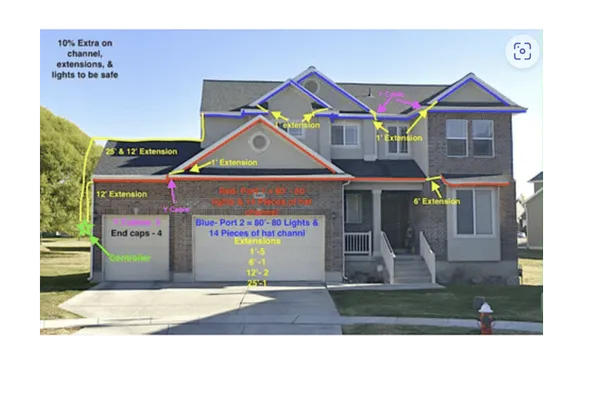
For the Map out example above the total material breakdown is:
System Voltage: 36V
Color of channel: Cameo
Channel Type: Hat
Total Lighted Footage: 160'
Power injection: NO
Controller: 1
Channel: 27- 6' sticks
Screws- 200
Lights: 175
1' extensions-7
6' Extensions-2
12' extensions-2
25- extensions- 1
Y Cables- 3
End caps- pack of 10
Absolute necessities
-Controller
-Lights
-Channel
-Screws
-Extension cables
Other Accessories
-Y Cable
-End Caps
- Signal boosters
-Power injection material
When would you need to power inject?
The controller will come with 3 outputs for your lighting runs, each 36V output can do a Max of 200', the 24V system can do a max of 100'. After that max you'll need to inject power. After you do so you can go an additional 100' with the 24V or 200' with the 36V system.
Power injection is needed due to voltage drop, voltage drop happens due to the length traveled away from the power source along with the gauge of the wire. due to the gauge of wire the lights and extensions run on it drops in voltage enough at 100' with the 24V system and 200' with the 36V system to effect the lights performance requiring a addition of power (Power Injection)
Materials needed for power injection 36V
Power injection pig female pig tale
Power injection Extension cables
Power injection T Cable.
Materials needed to Power inject 24V
16/2 - 12/2 Low voltage landscaping wire
Cut and Splice T cable
Water Proof Wire connectors
Discover the Transformative Power of Invisilights: Expertly Installed Permanent Lighting Solutions
Enhance your installation offerings with Invisilights, the premier permanent lighting solution designed for seamless integration into any property’s exterior architecture.
Crafted with high-quality aluminum channels and advanced LED technology, Invisilights delivers durability and superior energy efficiency—key selling points for your clients seeking long-lasting, cost-effective lighting solutions. Our system not only provides brilliant illumination but also boosts the aesthetic appeal and functionality of any home.
Offer your clients peace of mind with our robust 5-year warranty, ensuring reliable performance and minimal maintenance needs. This warranty supports your commitment to quality and customer satisfaction, making it easier for you to sell and install with confidence.
Our flexible, programmable system allows you to meet any client’s specific desires—from subtle accents to full-scale holiday displays—making it an adaptable choice for various applications. With Invisilights, you can cater to a wide range of preferences and needs, increasing your market reach and customer retention.
Choose Invisilights for your installations and add a transformative product to your portfolio that will impress clients and ensure your services remain in demand for years to come.
Frequently Asked Questions
What exactly comes in the 150' InvisiLights permanent outdoor lighting kit?
The InvisiLights kit is comprehensively equipped to ensure you have everything you need for installation. Each kit includes:
27 sticks of 6-foot Aluminum Channel to house and protect the lighting elements.
150 feet of dynamic RGBW LED Lights, which includes 23 sets of 6-count and 14 sets of 1-count lights, allowing for extensive coverage and diverse configuration options.
2 Data Boosters to enhance signal strength across the lighting installation, ensuring consistent control and color output.
A 320W Power Supply capable of supporting up to 190 puck lights, providing ample power for even the most extensive setups.
1 GFCI Outlet Adapter to ensure safe outdoor electrical connections.
1 Controller that allows you to manage and customize the lighting effects easily.
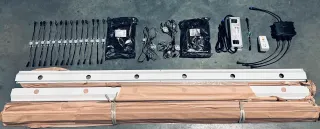
Will I need any additional components besides what's included in the Invisilights permanent lighting kit?
While the Invisilights kit comes with all the essential components for a standard installation, there are a couple of scenarios where you might need additional items:
Jumper Wires: Depending on the layout of your installation and the number of gaps or 'jumps' between the sections of lights, you may require jumper wires. These wires help bridge the gaps without losing the continuity of the light sequence, ensuring a smooth and uniform display across more complex architectures.
Data Boosters: If any section of your lighting setup is more than 15 feet away from the control box, additional data boosters will be necessary. Data boosters help maintain the integrity and brightness of the lights over longer distances, ensuring consistent performance throughout your installation.
Can I choose the color of the aluminum channel for my InvisiLights kit?
Yes, you can select your preferred color for the aluminum channel to match your home’s exterior or personal taste. Please make sure to specify your color choice in the notes at checkout when you place your order.
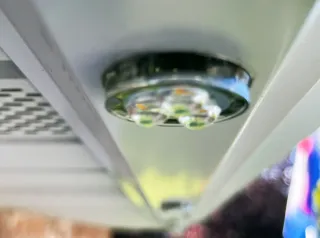
How do the included components of the InvisiLights kit enhance the lighting system?
Each component in the InvisiLights kit plays a crucial role in creating an effective and stunning lighting display:
Aluminum Channels: Provide a durable, weather-resistant housing for the LED lights, which helps in maintaining a clean and nearly invisible look during the day.
RGBW LED Lights: Offer vibrant, full-spectrum color and white light combinations, making it perfect for any occasion from festive holidays to elegant ambient lighting.
Data Boosters: Ensure that the signal remains strong across longer distances, which is crucial for larger installations.
Power Supply: Designed to efficiently handle the energy needs of the system without overload, ensuring safety and durability.
GFCI Outlet Adapter: Adds an extra layer of safety by protecting against electrical shorts and surges, particularly important in outdoor settings.
Controller: Provides the flexibility to customize and control the lighting sequences, colors, and patterns right from your smartphone or controller, adding convenience and advanced functionality to your lighting system.
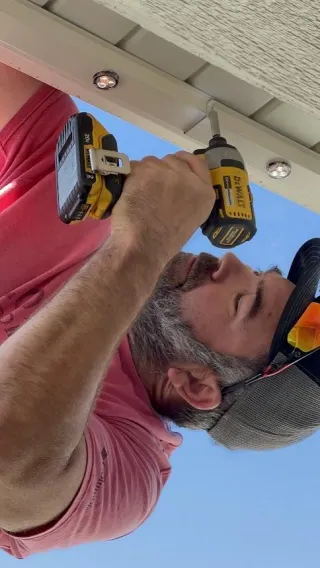
Can I use Invisilights year-round?
Absolutely! Invisilights are designed for versatile use throughout all seasons. Whether you're celebrating a special occasion, setting a mood for a party, Love your favorite sports team, or simply enhancing your home's ambiance, our lighting systems provide the perfect solution for any event, big or small.
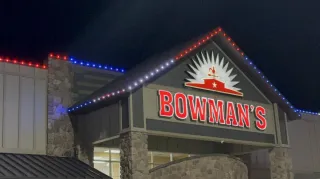
Can I set timers and events for Invisilights?
Yes, Invisilights feature advanced programmable settings that allow you to schedule lighting for specific events and automate timers. This functionality ensures that your lighting preferences are perfectly aligned with your lifestyle, turning on and off at predetermined times without any manual intervention.
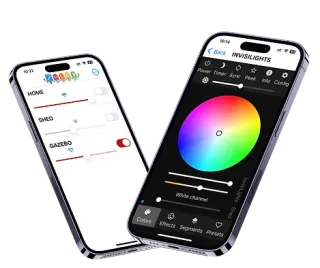
Is it possible to achieve warm or soft white with Invisilights?
Absolutely, Invisilights are equipped with RGBW technology, which includes a dedicated white LED alongside the standard red, green, and blue LEDs. This addition allows the system to produce authentic warm white, soft white, and various other shades of white with greater accuracy and intensity compared to traditional RGB systems. This capability ensures that you can effortlessly tailor the lighting to fit the desired ambiance and aesthetic of any environment, providing precise control over both vibrant colors and the subtlety of different white tones.
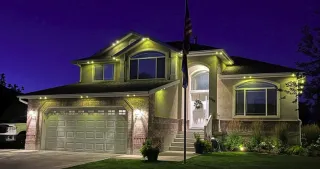
How do you ship your product?
Our products are shipped directly from our warehouse using reliable shipping carriers to ensure timely and safe delivery. Each product is securely packaged to prevent damage during transit, and we provide tracking information so you can follow your order’s journey to your doorstep.
Where are the controller and power supplies installed?
The controller and power supplies for Invisilights are typically installed in an accessible location such as a garage or utility room. These components connect to your home’s WiFi network, allowing seamless control over the lighting system via our user-friendly mobile app.
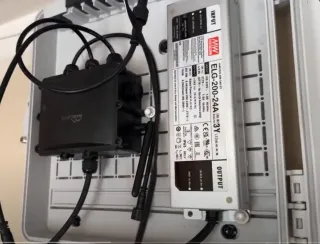
How long do Invisilights last?
Invisilights are engineered to last, with each LED bulb boasting a lifespan of over 50,000 hours. Given a typical usage of 10 hours per night, this translates to approximately 5,000 nights. This means your Invisilights could illuminate your home's exterior for nearly 14 years under these conditions, ensuring that your investment not only adds beauty but also long-term value to your property.
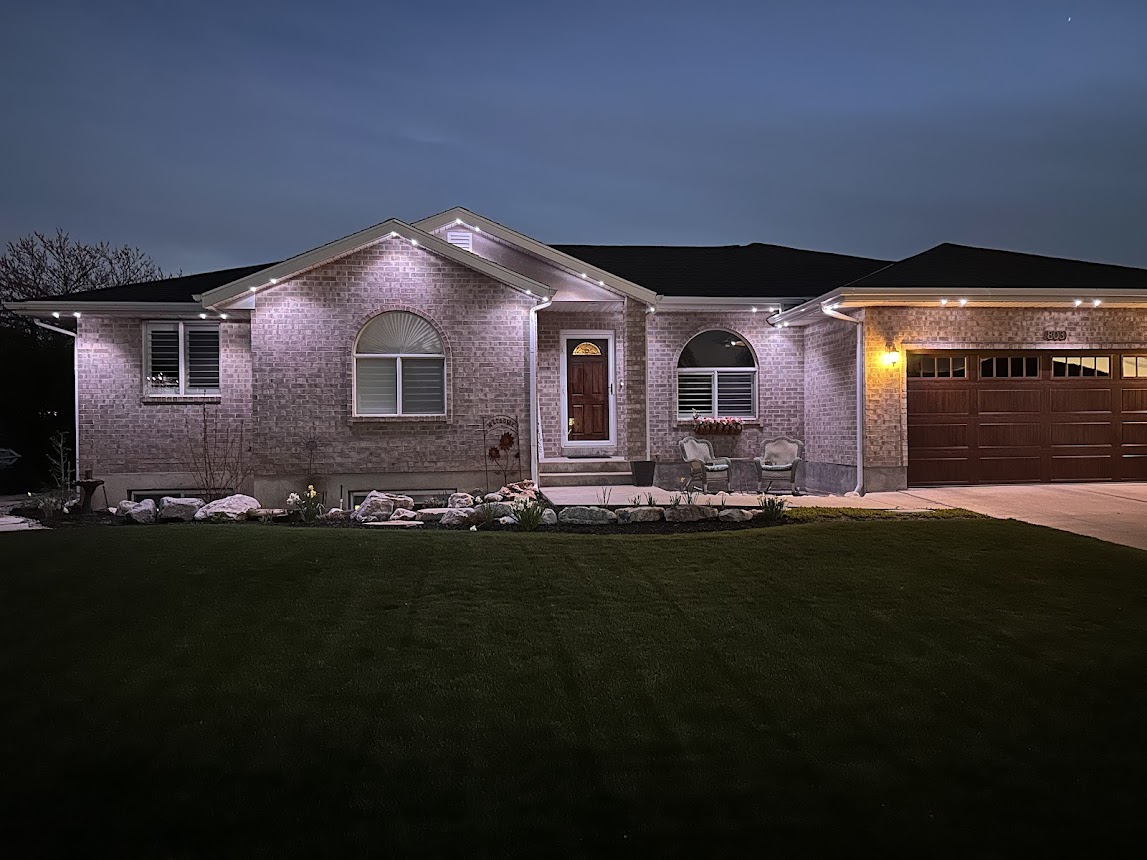
Are Invisilights dimmable?
Yes, all Invisilights are fully dimmable. This feature allows you to adjust the intensity of the light to suit various occasions, from a soft glow for a romantic evening to bright, vibrant colors for a festive celebration.

What types of custom channels are available?
Invisilights offers two types of custom channels, available in 40 different colors, ensuring a nearly invisible installation. These channels are designed to blend seamlessly with your home’s architecture, providing discreet yet effective lighting.

Can I control different zones independently?
Yes, the Invisilights system supports multiple zones which can be controlled independently or synchronized. This functionality allows for intricate lighting designs that can vary across different areas of your home, enhancing the overall impact and utility of your installation.
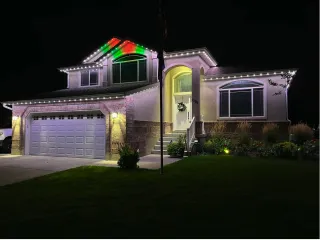
What is outdoor permanent lighting?
Permanent lighting refers to architectural-grade lighting systems that are installed permanently on your property to provide year-round illumination.
How does permanent lighting differ from traditional holiday lighting?
Unlike traditional holiday lighting, which is typically temporary and used only during specific seasons, permanent lighting is installed once and can be used throughout the year for various occasions
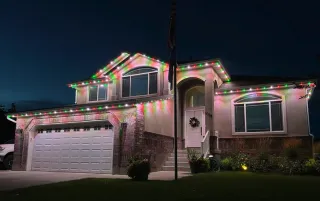
Discover Expert Tips on Our Blog
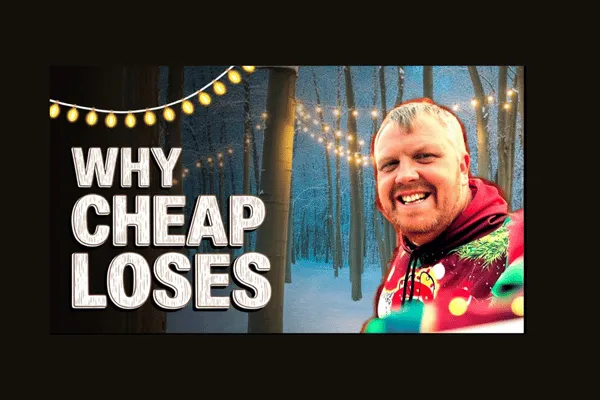
Christmas Lights Pricing Wars: Why Cheap Always Loses
The Christmas lights installation industry sees a predictable pattern each year: new installers enter the market charging rock-bottom prices, struggle through a season or two, and quietly disappear. Meanwhile, premium-priced operators thrive, scale their businesses, and build sustainable six and seven-figure enterprises. Understanding why this happens—and how to avoid the cheap installer's fate—can mean the difference between building a real business and creating an exhausting, unprofitable job for yourself.
The Action-Taking Weekend That Changes Everything
Recent training sessions demonstrate what separates successful installers from those who remain stuck. Eighteen attendees gathered for an intensive weekend focused not just on learning, but on immediate implementation. While some participants took notes and planned future action, one attendee created and posted 20 videos during the training itself. That's the difference between learning and doing—and doing is what generates results.
The weekend featured expert guest instruction on recruiting and leadership from someone who built and sold a $2.5 million business with over 50 employees. Attendees didn't just absorb information—they optimized LinkedIn profiles, sent connection requests, created videos, and posted content in real-time. One participant received a lead while still in the training session because he took immediate action rather than waiting for perfect conditions.
Google's automated ranking systems are designed to present helpful, reliable information that's primarily created to benefit people, and similarly, your business systems should prioritize serving customers over operational perfection. Action beats perfection every time.
The Book That Transforms Business Growth
"Endless Customers" deserves special mention as required reading for anyone serious about building a thriving installation business. However, reading without action produces zero results. The book provides frameworks and strategies, but implementation determines outcomes. If you're not willing to execute the concepts, save yourself the reading time.
The key is consistent action. Posting three videos and declaring "it didn't work" misses the point entirely. Success comes from sustained, consistent effort over weeks and months, not from sporadic attempts followed by quitting when immediate results don't materialize.
The Cheap Installer's Spiral of Death
Understanding why cheap pricing creates a death spiral helps installers avoid this trap. The cycle follows a predictable pattern:
Stage 1: Cheap Materials
Low-priced operators buy the cheapest possible materials—often incandescent lights or bottom-tier LED products from unreliable suppliers. These materials fail frequently, creating callback nightmares that consume profit and damage reputation. When you're waiting for shipments from China with uncertain quality and delivery timelines, you can't serve customers reliably.
Stage 2: Can't Pay Quality Workers
When charging $4-$6 per foot, there's no margin to pay competitive wages. Workers can earn $20 per hour at McDonald's without climbing ladders in freezing weather. Why would quality employees work for $10 per hour in dangerous conditions when easier options exist? The result: constant turnover, poor workmanship, and the owner doing most work themselves.
Stage 3: No Marketing Budget
Without healthy margins, marketing becomes unaffordable. How do you invest in yard signs, Facebook ads, or professional branding when there's barely enough profit to cover materials and labor? The business becomes trapped—unable to generate leads without marketing, unable to afford marketing without better margins.
Stage 4: No Systems Development
Cheap operators stay stuck doing everything themselves. There's no capital to invest in CRM software, hiring administrative help, developing training materials, or creating operational systems. The owner becomes the bottleneck, personally handling sales, installation, customer service, and takedown. This isn't a business—it's an exhausting, low-paying job.
Stage 5: No Profit
After materials, labor (even underpaid labor), insurance (if they carry it), and minimal overhead, cheap installers earn little to nothing. Many don't even realize they're operating at a loss when accounting for their time and liability exposure. One installer charging $5 per foot and taking three hours per $1,000 job nets perhaps $2,000 daily—before expenses, insurance, and overhead. That's unsustainable.

The Premium Pricing Success Cycle
Contrast the death spiral with how premium-priced operators build sustainable businesses:
Quality Materials and Fast Delivery
Premium operators buy quality LED products with warranties from reliable suppliers offering two-day shipping. When equipment fails, warranty replacements arrive quickly. There's no worrying whether materials will arrive or if they'll work properly. This reliability alone justifies higher pricing.
Paying Workers Well Creates Loyalty
Competitive wages attract quality employees who show up consistently, work safely, and treat customers professionally. When workers are paid well, they take pride in their work and become ambassadors for your brand. Internal customers (employees) who feel valued create better experiences for external customers (paying clients).
Content should demonstrate first-hand expertise and depth of knowledge, and when you invest in employee development, your team demonstrates that expertise to every customer they serve.
Marketing Budget Generates Consistent Leads
Ten percent of revenue allocated to marketing—a sustainable number at premium pricing—generates consistent lead flow. With healthy margins, spending $5,000-$10,000 monthly on marketing feels reasonable because the return justifies the investment. Knowing that 80% of customers return annually makes customer acquisition costs even more palatable.
Profit Enables Growth
Real profit—money left after all expenses, including proper owner compensation—funds business growth. Premium operators invest in CRM systems, safety equipment, training programs, and additional crews. Profit creates options: scale the business, take time off, invest in new equipment, or simply enjoy the rewards of entrepreneurship.
Systems Enable Scaling
With adequate resources, premium operators develop systems and processes that allow the business to run without their constant involvement. Checklists, training manuals, CRM workflows, and standard operating procedures mean quality remains consistent regardless of which crew handles installation. Systems separate business owners from self-employed technicians.
Understanding Your Target Customer
Many installers obsess over competitors charging $2-$5 per foot while ignoring the economics of their ideal customer. Consider the typical premium customer profile:
The Stay-at-Home Mom in the Million-Dollar Home
Her mortgage payment: $8,000-$10,000 monthly. Her Cadillac Escalade or Yukon: $2,000 monthly payment. Daily Starbucks: $10 per day = $300 monthly = $3,600 annually. She spends more on coffee than many installers charge for complete installations.
Yet installers worry this customer won't pay $1,500-$3,000 for professional holiday lighting? The disconnect reveals the real problem: not customer unwillingness to pay, but installer unwillingness to believe they're worth premium pricing.
People in every market purchase luxury vehicles, designer accessories, and premium services daily. The money exists. The question is whether you believe your service deserves a portion of that discretionary spending.

Why Customers Choose Premium Pricing
Understanding why customers select premium-priced installers over cheap alternatives helps frame your value proposition:
Professional Appearance and Communication
Premium operators present professionally from first contact through project completion. Clean vehicles, uniformed crews, prompt responses, and clear communication signal competence and reliability.
Reliable Service and Responsiveness
When issues arise—and they occasionally do—premium operators respond immediately. Lights go out? They're fixed within 24 hours. Time for takedown? It happens on schedule without the customer chasing the installer. This reliability has real value.
Proper Insurance and Safety Protocols
Premium customers want peace of mind that if something goes wrong, they're protected. Proper insurance, safety equipment, and professional practices justify higher pricing because they transfer risk from customer to installer.
Systems and Efficiency
Jobs completed in 45-90 minutes rather than 3 hours reflect systems and training. One installer charging $5 per foot takes three hours per $1,000 job, earning $2,000 daily (before expenses). A premium operator charging $10 per foot completes similar jobs in 90 minutes, servicing 4-5 properties daily at higher margins. The difference? Systems, training, and experience.
Breaking the "$6 Per Foot" Mental Barrier
The most common limiting belief sounds like: "Nobody in my area will pay more than $6 per foot." This reveals the real problem: you don't believe you're worth more, so you'll never charge more—or if you try, your lack of confidence kills the sale.
One installer insisted his market wouldn't support premium pricing. Everyone charged $5 per foot, he explained. When asked what he did for extremely steep roofs requiring lifts, he admitted raising prices to $10 per foot—and customers paid without objection. This proves customers will pay premium prices when value is properly presented.
The math is simple: raising prices from $6 to $8 per foot (a 33% increase) generates the same revenue from 25% fewer jobs. That's less wear on equipment, less risk exposure, less labor cost, and more profit. Raising from $6 to $10 per foot means doing 40% fewer jobs for the same revenue—and likely banking double the profit.
The Power of Confident Communication
One installer couldn't understand why he closed so few jobs. During conversation, he said "um" twenty times in a few minutes. That verbal tick signals uncertainty and lack of confidence—exactly what customers don't want from someone they're hiring to work on their home.
If you say "um" 20-50 times during a sales conversation, customers subconsciously question your competence. They wonder: "If he's this uncertain about his service, why would I trust him on my roof?"
Eliminating filler words requires awareness and practice. Record yourself during practice calls. Count your "ums," "uhs," and "likes." Then deliberately slow down your speech, thinking before speaking. Within weeks, filler words decrease dramatically, and closing rates improve correspondingly.
The Importance of Answering Your Phone
This point deserves emphasis: answer your phone, or pay someone to answer it for you. Spending thousands on yard signs and Facebook ads while letting calls go to voicemail is self-sabotage. Every missed call represents lost revenue—potentially a $2,000-$5,000 job that goes to the competitor who answered.
If you're on the roof and can't answer professionally, that's the signal to hire someone for phone coverage. But you can't afford that hire if you're charging $5 per foot. Premium pricing funds the administrative support that allows you to stay on jobs while someone else handles incoming calls professionally.

Pre-Qualifying Leads: The Right Way
When conducting in-person estimates, pre-qualifying prevents wasting time on price shoppers. However, avoid terms like "minimum" that create psychological resistance. Instead, frame it positively:
"Our packages start at just $900, which includes design, professional-grade LED lights, installation, maintenance, and takedown. Does that sound like the level of service you're looking for?"
Then stop talking. Listen. Their response tells you immediately whether to schedule the appointment. A "yes" means they're a qualified prospect. Hesitation or "that's way more than I expected" means they're probably not your ideal customer—and that's fine. Better to know before driving to their property.
Dealing With the "Market Is Flooded" Myth
Installers frequently complain that "the market is getting flooded with competitors." This reveals obsession with competition rather than customers. Ask these installers about their business metrics—average ticket, close rate, customer acquisition cost—and they draw blanks. But they can tell you everything about competitors: pricing, number of reviews, service areas, even personal details about the owners.
This backward focus guarantees failure. Instead of worrying about competitors, focus on serving customers exceptionally well. There are thousands of potential customers in any market. You don't need everyone—just 100-200 quality clients paying $1,500-$3,000 generates $150,000-$600,000 revenue.
Competitors charging $4 per foot aren't your competition. They serve price-sensitive customers who aren't your target market anyway. Premium customers actively avoid the cheapest option because they associate low prices with low quality and unreliability.
Sales Timing: October vs. November
October sales typically run slower than November, creating anxiety for inexperienced installers. This is normal seasonal pattern, not a business problem. Unless you've executed strong marketing all year and developed excellent closing skills, expect modest October sales followed by November explosion.
Don't panic if bookings feel slow in mid-October. Weather changes trigger psychological shifts—as temperatures drop and Halloween approaches, holiday mindset activates. Customers who browsed websites in September suddenly become ready to commit. November typically delivers 60-70% of seasonal sales for most markets.
Use slower October periods for marketing intensification. Deploy yard signs aggressively, post daily on social media, engage on LinkedIn, and follow up with leads from earlier outreach. This groundwork positions you for November's surge.
Taking Massive Action: The Only Path Forward
Every successful installer shares one trait: massive action despite imperfect conditions. They post videos even when uncomfortable on camera. They deploy yard signs with "good enough" designs rather than waiting for perfect artwork. They close jobs before mastering every installation technique.
One training attendee had never created a video before the weekend. He volunteered to demonstrate something on camera despite nervousness. Then he downloaded CapCut (a video editing app) for the first time, edited his clip, and posted it during the training. That video generated 1,300 views within hours—simply because he took action instead of waiting for perfect skills or conditions.
That's the difference between winners and waiters. Winners act despite uncertainty. Waiters seek perfect conditions that never arrive.

Why do cheap installers consistently fail while premium operators thrive?
Cheap pricing creates a death spiral: poor materials lead to callbacks, low margins prevent paying quality workers, no marketing budget stops lead generation, and absence of profit eliminates ability to invest in systems. Premium pricing funds quality materials, competitive wages, marketing budgets, and system development—creating sustainable, scalable businesses rather than exhausting jobs.
What should I charge per foot for residential Christmas light installation?
Aim for $8-$12 per foot as a baseline for quality service. Markets with strong economies and established customer bases support $10-$14 per foot or higher. Some installations reach $20 per foot when design complexity, difficulty, or customer expectations justify premium pricing. Never charge below $8 per foot—it's unsustainable long-term.
How do I respond when customers say I'm too expensive compared to competitors?
Recognize you're serving different market segments. Budget installers attract price-sensitive customers comparing quotes down to the penny. Premium operators attract quality-focused customers valuing professionalism, reliability, and peace of mind. Don't compete on price—compete on value, expertise, and customer experience. The customer objecting to your pricing probably isn't your ideal client anyway.
Should I offer October discounts to book more jobs before the rush?
Never discount in October. Customers who book at discounted rates in October will expect the same pricing when they refer neighbors or rebook next year. If you're booked solid in October, raise prices or add crews—don't discount. Early bookings at full price train customers that your value justifies your pricing year-round.
How do I eliminate filler words like "um" and "uh" that undermine my sales conversations?
Record yourself during practice calls and count filler words. Most people dramatically underestimate their usage. Once aware, deliberately slow your speech, pausing to think before speaking rather than filling silence with "um." Practice daily for 2-3 weeks and filler words decrease 70-80%, dramatically improving perceived competence and confidence.

What's the difference between a DBA and LLC for a new Christmas lights business?
A DBA (Doing Business As) costs $15-$20 and allows you to operate under a business name while remaining a sole proprietor. An LLC provides liability protection but costs $200-$500 to establish. For first-year operators testing the business, start with a DBA to keep a professional Christmas lights brand separate from other services like pressure washing. Upgrade to LLC once revenue justifies the investment.
How do I know if I should use pitch hoppers, Goat Steep Assist, or other roof safety equipment?
Start with pitch hoppers ($115) and Cougar Paws roof boots. This combination handles most residential roofs safely and affordably. Add Goat Steep Assist ($600-$700) if you're uncomfortable on roofs and want something to hold onto, or if you frequently work on steep pitches above 8/12. Never cheap out on safety equipment—one fall costs infinitely more than proper gear.
Should I pre-qualify leads before scheduling in-person estimates?
Absolutely. Ask: "Our packages start at just $900, which includes professional design, installation, maintenance, and takedown. Does that sound like the service level you're looking for?" Their response immediately indicates whether they're a qualified prospect. This saves hours driving to appointments with price shoppers who'll never book at your rates.
Why do installers obsess over competitors instead of focusing on their own business?
Fear and lack of confidence. When you don't believe in your own value, you fixate on what competitors charge, thinking lower prices are why they succeed. In reality, most successful operators know little about competitor pricing because they're too busy serving customers. Focus on your metrics—average ticket, close rate, customer satisfaction—not competitor analysis.
What's the single most important action I can take this week to grow my Christmas lights business?
Answer your phone professionally every single time, or pay someone to do it for you. Missed calls are lost revenue—potentially $2,000-$5,000 per call. If you can't answer while working, that's the signal to hire phone coverage. Everything else—marketing, training, equipment—becomes irrelevant if you're not converting incoming leads because calls go unanswered.
Copyright ©2025 All Right Reserved website designed by christmaslights.io
Terms of Service / Privacy Policy
Have questions or need assistance?
Contact us at (855)619-LITE
